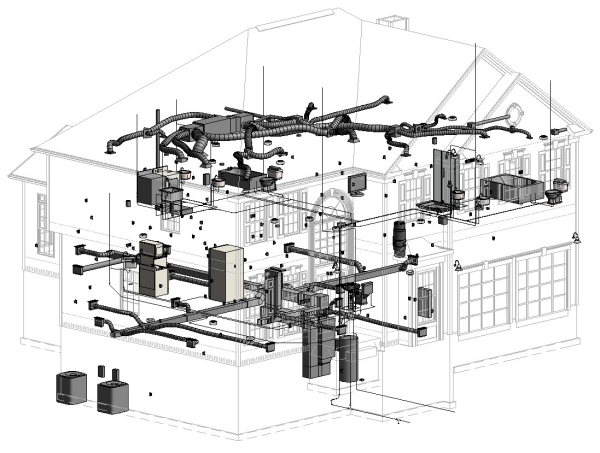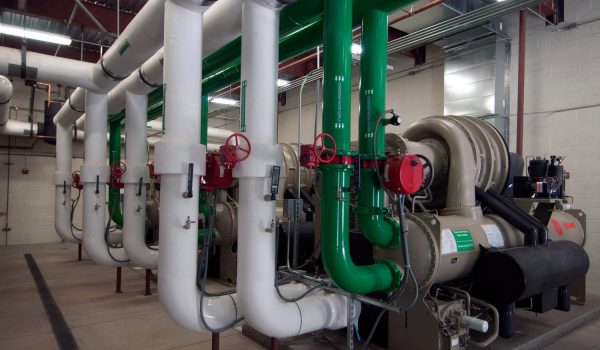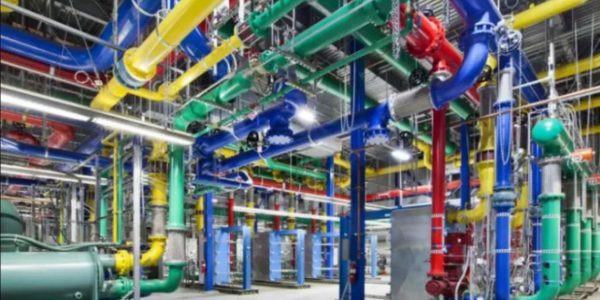Introduction When upgrading/ installing your home’s HVAC sizing and design system, there are many things you need to consider. This

Introduction
Traditionally, office spaces comprise private offices around the building’s perimeter, with cubicles at the center. But, in recent years, corporate office spaces have been shifting away from that culture. Instead, modern offices have an open plan layout. This design is intended to allow more natural light into the building, which is important for the comfort and health of the employees.
However, this shift has significantly affected the HVAC system design for offices. For that, it’s important to consider the HVAC design for open spaces while redesigning your existing office layout. This will help you avoid all the expenses that may result over time due to inefficient HVAC system installation.
Fortunately, this article has some incredible HVAC design strategies for modern office spaces you can consider. That said, let’s get right into it!
HVAC System Design Strategies for Open Offices
Sensor technology has become very popular in recent years. For instance, you can integrate it with your HVAC design for offices to make your system more energy-efficient.
Note, there are 2 types of sensors that you can install in mechanical design for offices. First, there are light sensors that detect the amount of lighting in the office building and make the necessary adjustments. Moreover, you can connect them to your Heating and cooling unit. Secondly, there are occupancy sensors that detect the number of people occupying the space. As a result, they will adjust the indoor temperature accordingly.
Creating many independently-controlled zones in an open office’s HVAC system ensures high energy efficiency. More importantly, it allows you to maintain a comfortable temperature for each area. This is very important considering that every space in an office building has a different requirement.
For instance, computer rooms have unique needs for humidity and temperature control. While conference and meeting rooms aren’t used frequently, meaning cooling sessions aren’t that frequent. Such spaces have to be treated individually since they’ve unique HVAC requirements.
One thing you need to note though is that creating zones in an open office is easier said than done. Especially considering that it does not have several traditional walls that you can use for HVC ductwork and piping. For that reason, it’s important to involve an HVAC professional firm like Innodez Design and Engineering in your plans.

When creating a mechanical design for offices, you can easily install a larger system than you need. Although some office owners think bigger is better, that’s not the case with HVAC systems. Instead, installing an Oversized heating and cooling system will frequently turn off, causing the Air conditioning to experience short-cycling problems. More notably, this will significantly increase your monthly energy bills or cause your system to break down.
With that in mind, always make sure you perform HVAC load calculations for your open space. If possible, contact a qualified HVAC professional to perform these calculations for you.
An HVAC system for office space does more than just control the indoor heating and cooling needs. It has a ‘V’ in its acronym which stands for ventilation. In other words, an HVAC system is responsible for ensuring there is an adequate flow of fresh, clean air in the office space. At the same time, it eliminates odors and stale air for the health and comfort of the occupants. Therefore, while designing an HVAC system, it’s important to put ventilation indoor air quality into consideration.
Many traditional office buildings utilize an overhead system to distribute the cooled or heated air throughout the space. However, such HVAC system designs will be inefficient in modern office spaces, especially if they’ve high ceilings. In that case, you should consider using a modern underfloor system to distribute air that has been cooled or heated throughout the office space. These systems come with diffusers that are installed under a raised floor, allowing warm air to move up towards the ceiling. As a result, the office will maintain indoor air quality and experience consistent comfort levels.
HVAC systems consume more energy than most appliances found in an office setting. For that reason, it’s important to reduce HVAC loads to save on energy consumption rates. As an example, when creating the open office plan, use Low-E glass to keep away heat from the sun during summer. Moreover, since most working hours happen during the day, consider installing a low-consuming bulb. Such techniques will make it easy to reduce the HVAC cooling and heating loads.

Let Innodez Design & Engineering design the HVAC system for your open office!
At this point, we’re certain that you’re familiar with everything you need to know about HVAC system design for offices. However, it’s still important to engage an HVAC professional in your project.
So, if you’re planning to build or renovate your office space in California, Innodez is the place to go to! Our team of HVAC experts will design the best HVAC system plan for your open office layout to ensure optimum comfort for every employee. Even better, our designs ensure maximum efficiency in energy consumption for your HVAC system. Call us today!
About Author
InnoDez